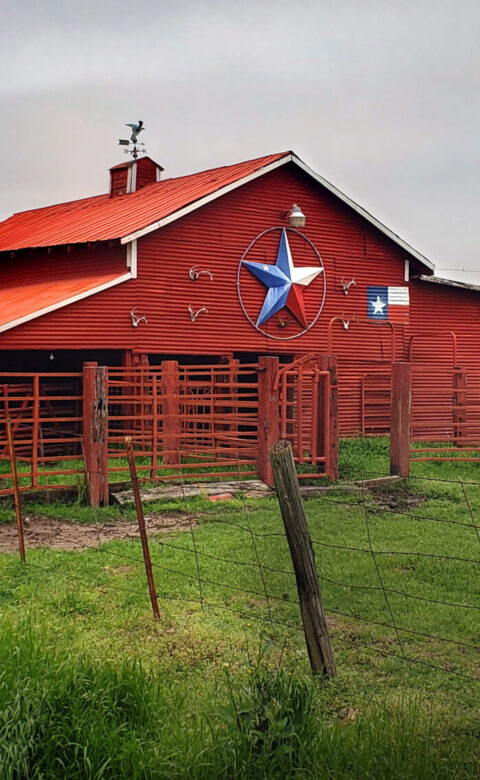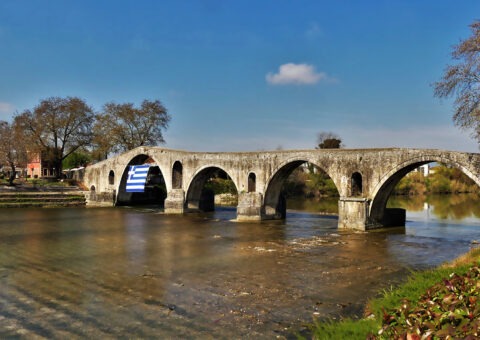In Mani, Greece, there is a storied hiking trail that leads to Cape Tainaron. Starting at the oracle of Poseidon, the path is a 45-minute journey through history, mythology, and anthropology. Local storyteller Lia Mageira grew up in the area, and this trail is part of her history too. Walk with her.
To write about Mani, you need to have a strong hand that can withstand the shattering of the heart. To dip your pen into the love of freedom and the great passions of people who do not have many words.
Mani is a wild, stony, magical place. Wherever I walk, there roars the dry earth, the hot rock, the thorny bushes.
A proud place which has never known a conqueror.
What is Mani to me? It is my roots that are deeply embedded in countless centuries. It is Love and Death.
A land hardy, taciturn, and inaccessible.
A land tortured.
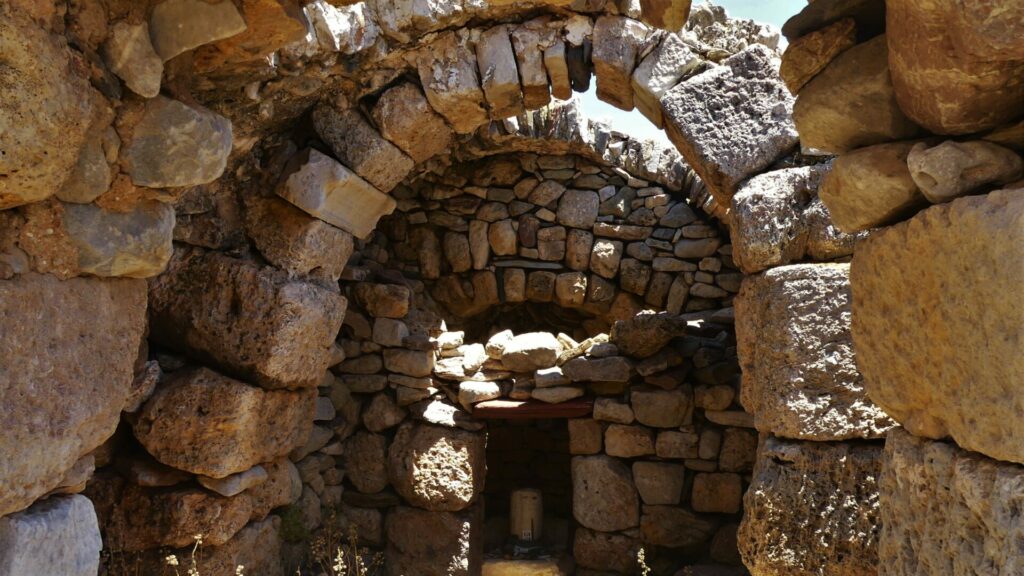
We start our walk toward Cape Taenaron, meeting the chapel of the Holy Asomati, built where the Oracle of Poseidon was. Poseidon was the god of the sea and earthquakes.
The sanctuary offered asylum to exiles, slaves, and criminals.
Once, the Eilotes, slaves of the Spartans, fled to the Oracle to beg for asylum. The Spartans tricked them with false promises and murdered them.
This sacrilegious act has gone down in history as the Taenarion Agos, which means an insult to the Gods. The ancients believed that provoked the wrath of Poseidon, who tore the city of Sparta from its foundations in 464 BC with a powerful earthquake.
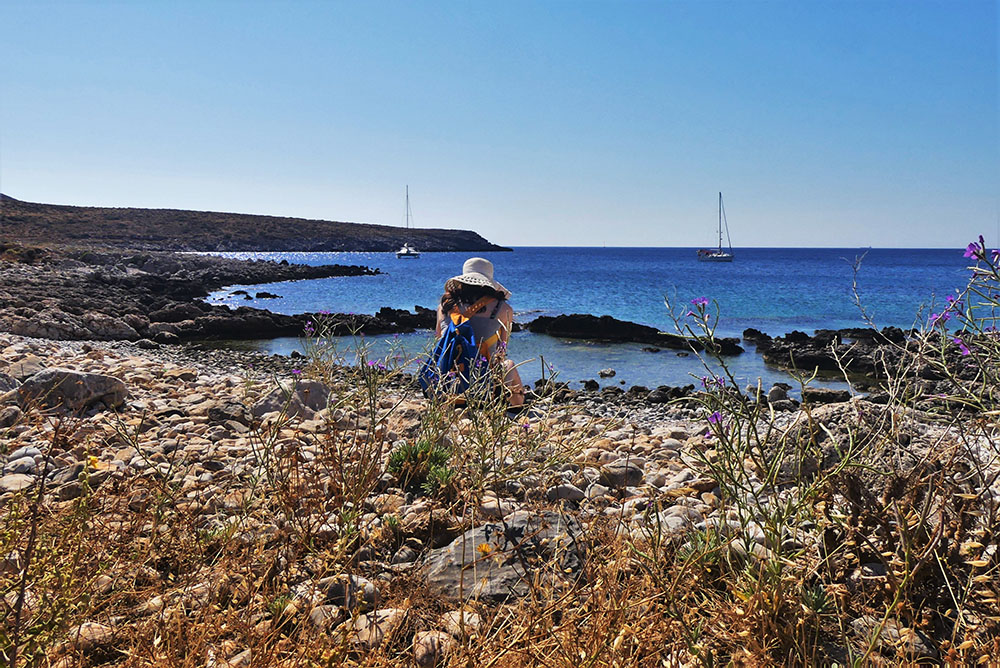
Before us stretches a harsh and inhospitable tongue of land with thorns and stones.
Nowhere are there trees and branches; only the wild bushes that scratch our feet. There is no shadow, and the sun burns without mercy. We start the trail that leads to the southernmost edge of mainland Greece, to the lighthouse of Taenaron. We descend toward the sea level.
The small port in front of us, Porto Sternes, has natural rainwater collection tanks. Water has always been precious in Mani. In the old days, the drinking water offered at a wedding determined the family’s wealth.

The ancient settlement of Taenarians was abandoned after the Roman period.
Centuries have passed over the extraordinary mosaic from the first century AD.
It is called the Star of Aria. This black star is decorated with shapes and meanders that have worn away over time.
The oracle attracted those who wished to communicate with their beloved dead. They arrived here with a sense of devotion and deep faith.
The ancient Greeks knew how to choose the locations for their sanctuaries. Even here, where savagery and the mystery of death go hand in hand, there is not a trace of the horror of Dante’s Divine Comedy.
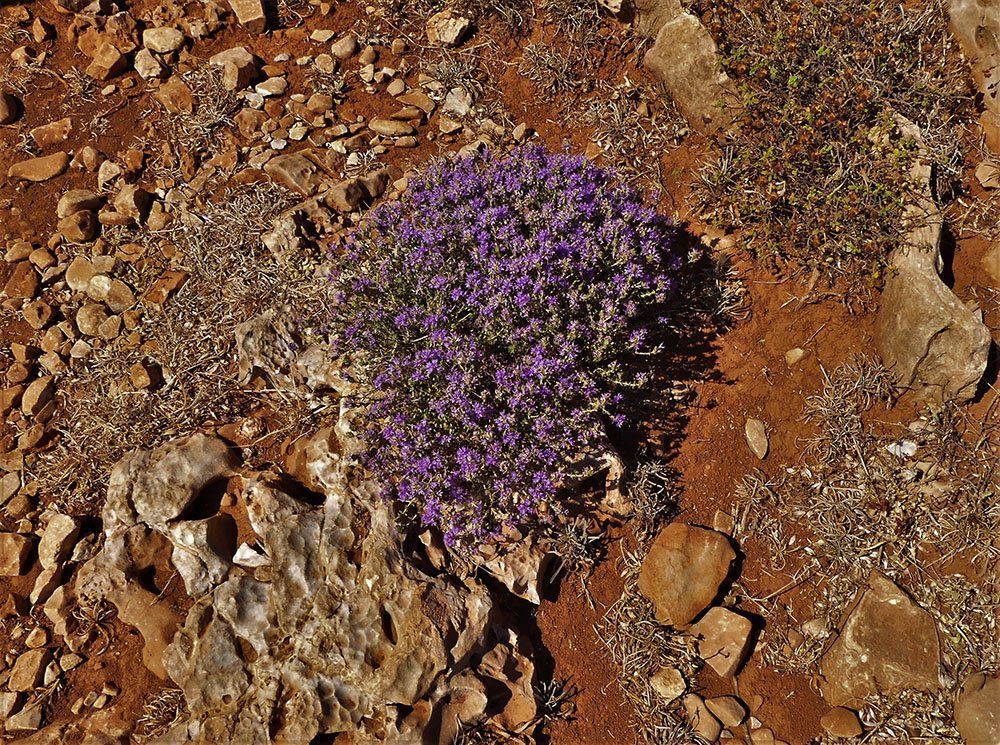
On the rocky coast, the air smells of thyme and sea salt. The hot air is breathtaking.
Pure stone! A harsh and hostile landscape. A furnace under the sun.
The next creek is wild. The path continues parallel to the rocky coastline. To our left is the void, the steep slopes ending in the inhospitable shores. Foaming waves crash against the rocks. A seeded rock garden is next to the footpath.
It is a dead planetary landscape, an ideal habitat for dragons. Everything is still. Vertical light reflects off the stones with a metallic sheen. The entire landscape gives me the creeps.

We hear the lapping of the waves, the buzzing insects, and the crack of the thorns under our soles.
On the horizon, we can make out the bulk of Kythera Island.
Beneath the cliff is a sour sea with waves foaming around it. I throw a stone; it takes a few seconds before it hits the water. The noise startles a few seagulls, which start circling and crooning over the white water.
A fisherman in Spira, my birth village, used to say that when the wind was favourable, you could hear the roosters crowing in Kythera. I wondered if the sound of my rock was heard there…
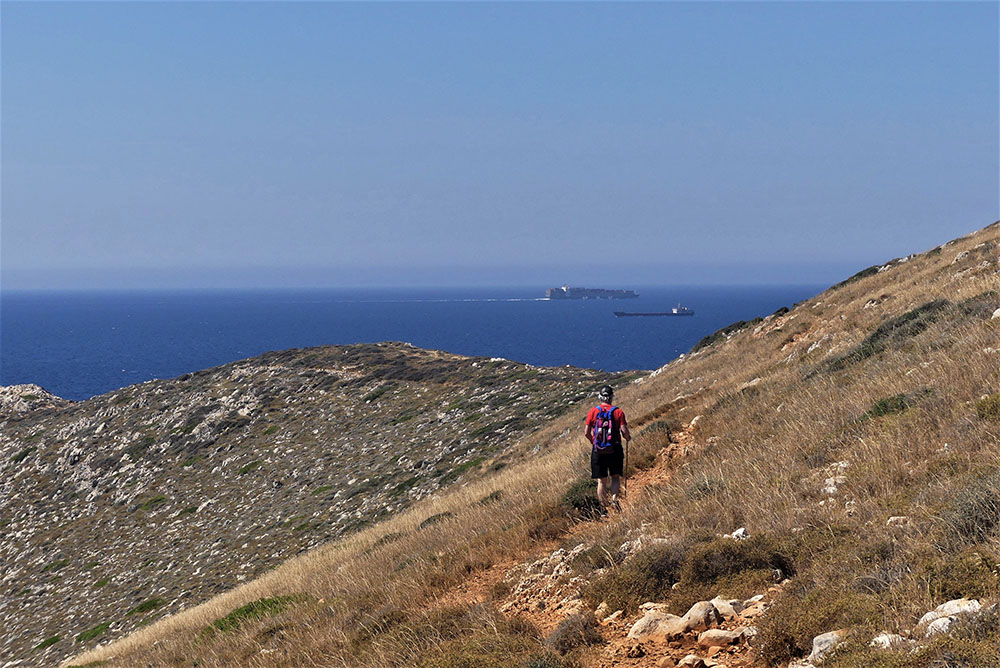
The sea horizon opens like a fan.
To the west, Cape Grosso juts out from the land like a giant stone blade.
Between Crete Island and the cape, the pirate ships of the Maniats people were moored until the beginning of the 19th century. They attacked lone Venetian and Turkish ships, forcing them onto the rocks. Nearby was the base of the legendary pirate Sassaris.
A cruise ship passes off the cape. I imagine its passengers leaning on the handrail and saying, “What a wild cape. How lonely the lighthouse looks at the end of it. I wonder if anyone ever goes there?”
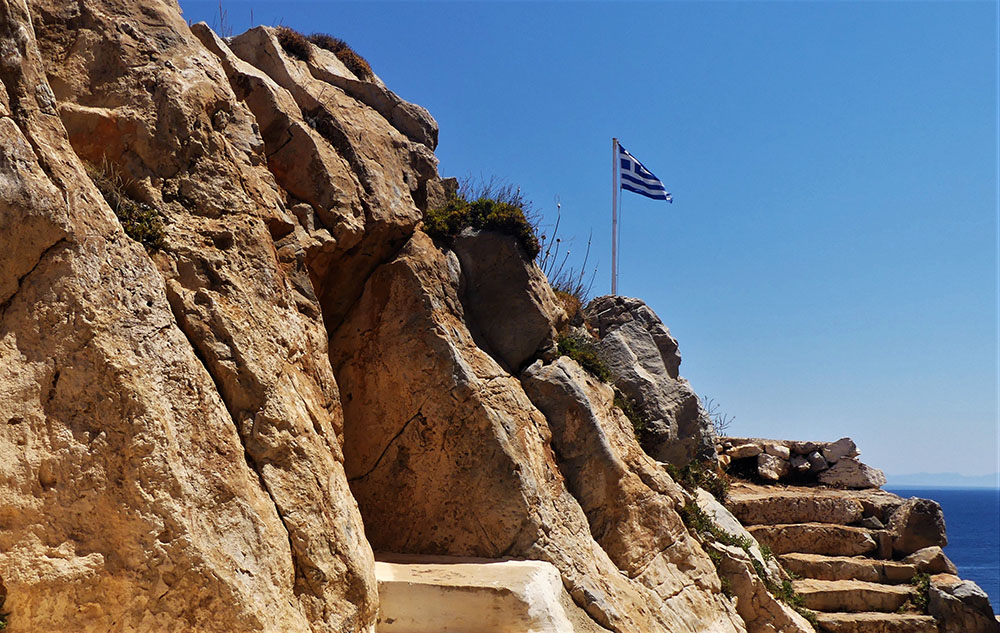
In half an hour, we reach the end of the uphill climb. Straight ahead, we face the lighthouse. Among the grey limestones of the rugged slope, there are wildflowers. This is the miracle of life!
The steps of the lighthouse have become one with the rock. Human creation becomes one with God’s creation.
When we were children, we calculated distances by the crow’s wings. Between Taenaron and the African desert, how many flights should there be?
We’ve reached the lighthouse precinct. The wind whistles. I put my finger on the terrace and say, “Here, it’s the end of the world.”
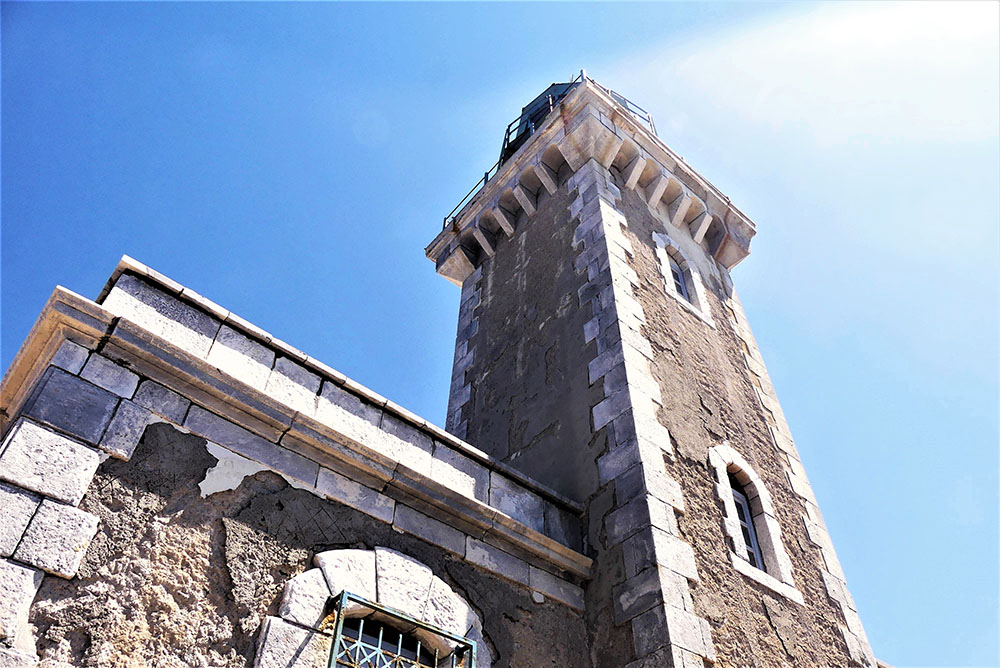
The massive building, constructed in 1882, has a height of 16 metres.
It seems to be surrounded by the sea. When the weather is stormy, the fear easily nestles in you.
Sixty-two miles south of the lighthouse, the greater depth of the Mediterranean Sea was measured at 4,850 metres. This is the Oenoussa Trench, the deepest one in the Mediterranean Sea.
British and Italian warships clashed off Taenaron cape during World War II. In this historical naval conflict, the Italians suffered a crushing defeat. Many cruisers and destroyer ships of the Italian fleet were sunk as they headed for Crete Island.
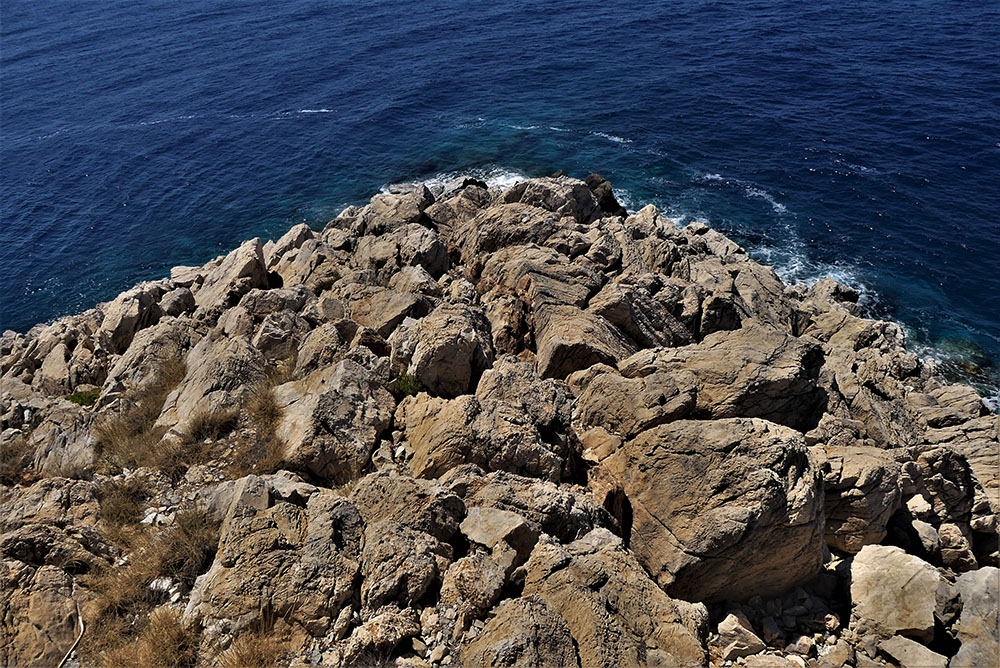
Ancient people believed that the Gates of the Underworld were located here.
Whoever managed to enter the kingdom of Hades alive, with much difficulty and great pain, could return.
In Mani, death is sung. The laments of Mani have come out of an ancient tragedy.
There is a similarity between the dirges and Andromache’s lament over the body of Hector in Homer’s “Iliad.” Mani remained pagan for six centuries after Christianity became the official religion in Greece. The dirge is its legacy from Ancient Greece.
The Gates of the Underworld remain majestic, serene, and peaceful. The scent of sage and oregano wafts through the air.
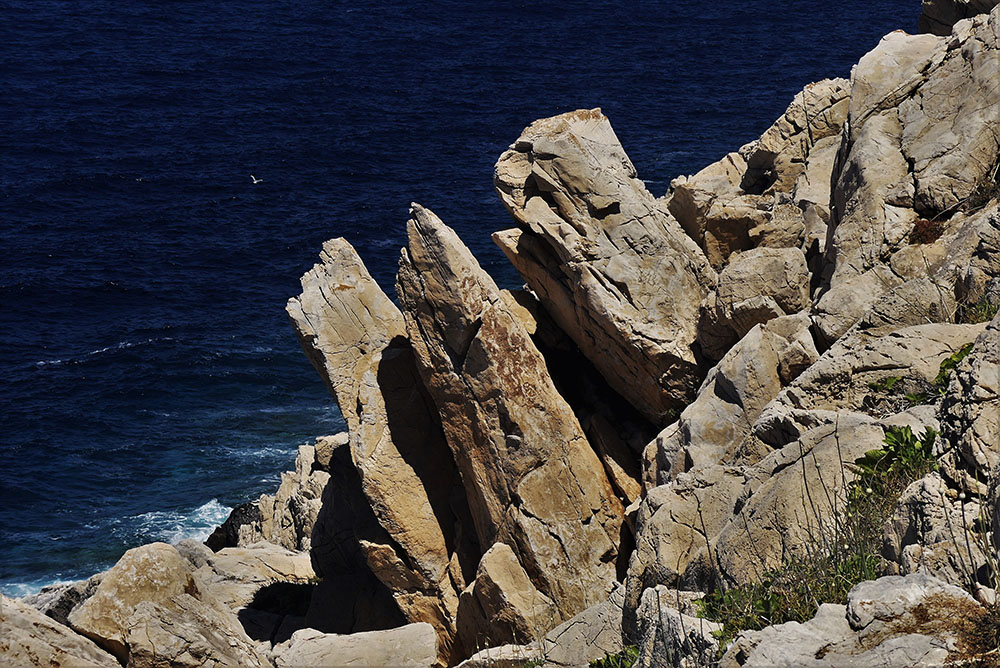
My grandmother was always dressed in black. On her face, her eyes stood out like coals.
During World War II, Germans shot his aircraft down. Fishermen found his dead body and carried it to shore. In Mani, no one descends to the Underworld without weeping.
“Tell me the pilot’s dirge,” I asked my grandma.
I do not know if it was the music or the words, but every time I heard it, I felt a lump in my throat and a sting around my eyes.
“For the honour of Greece, he made the raid, but if he has a mother and a sister, great evil will befall them.”
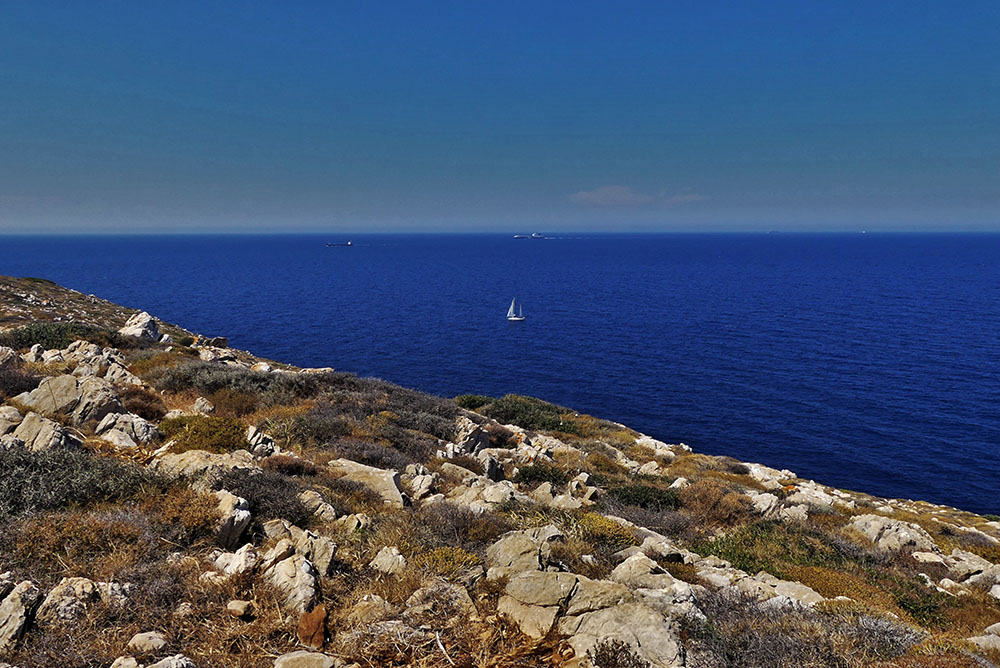
The Gates of the Underworld is an inaccessible cave. The legend tells of the arrogant ruler Mavroidis who locked his beautiful wife in a tower and boasted that no one could take her away from him. Death challenged. The walls of the cave, they say, are full of her curls.
In fact, on the walls, there are swallows’ nests and bats hanging upside down. The water below the surface glows with a bright blue light. Moving your hands in the water, glowing phosphorescent bubbles appear. Nothing is scary. The cave is beautiful and silent, like a gigantic green sapphire.
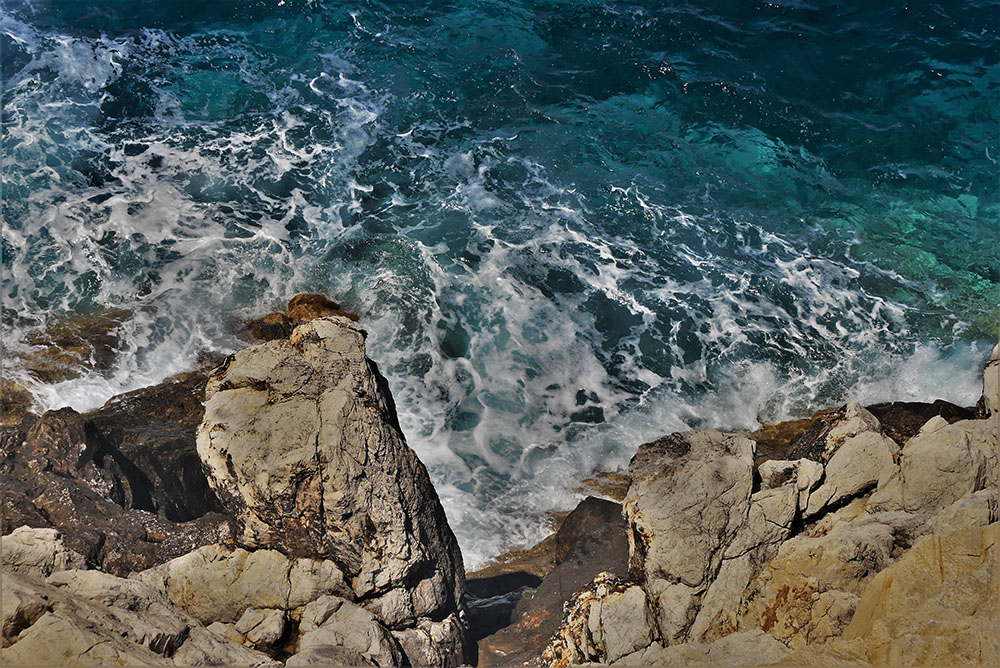
Mani is a place full of spikes, like the souls of the people who inhabited it. Like shells, we clung to our rocky land. We fortified in the wild niches of our mountains. We sealed the passages with our blood so that no enemy could enter.
Madmen and romantics have written history.
I’m looking at the horizon line. Above me, the sky shines.
As if by some strangeness of nature, I’m stuck on the rocks and prevented from rising to infinity.




